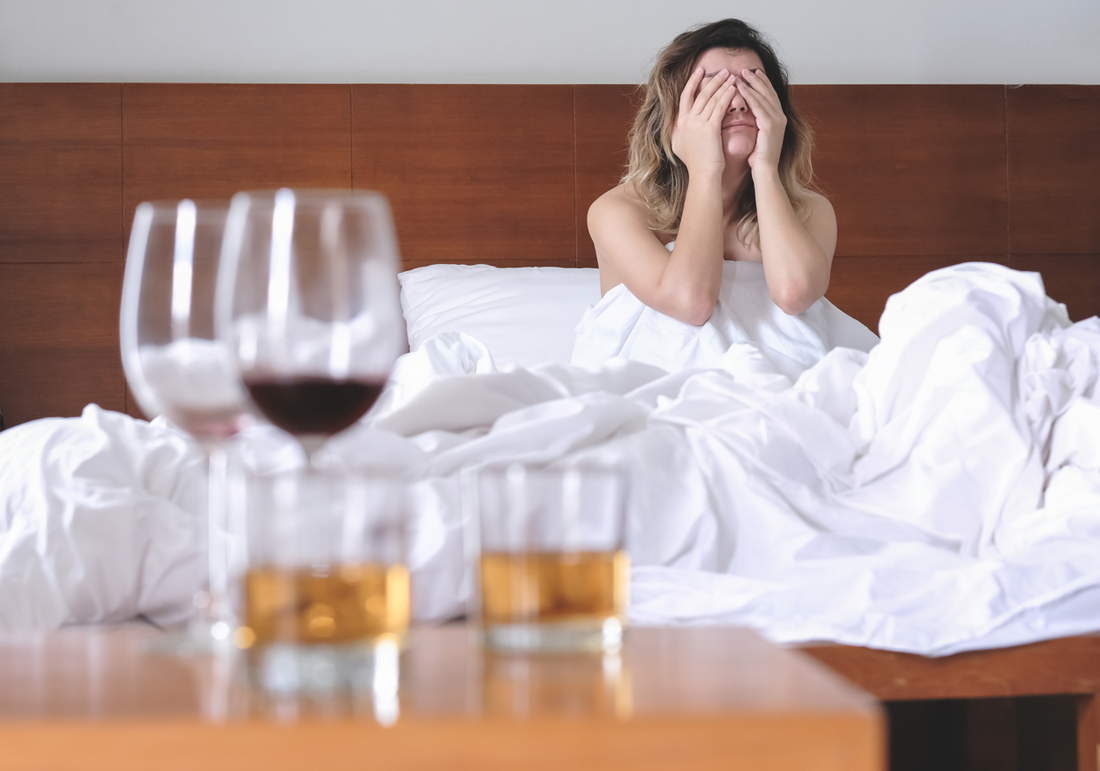In this post, we will be exploring the kava hangover. Kava is an alcohol alternative. Why high-quality kava doesn’t usually cause a hangover. Which Kava is most likely to cause a hangover and why?
Kava does not typically cause a hangover. It helps to decrease social anxiety and works as a great alcohol substitute. Therefore, it may surprise some people to learn about the hangover effects that kava can produce.
What is a hangover?
Generally, if you’ve had too much alcohol, you’re familiar with what a hangover feels like. Kava hangovers are usually the result of many combined symptoms. Often, they are the main reason people search for alcohol substitutes and alcohol alternatives.
They can be awful. A combination of dehydration, muscle tension, headaches, and digestion problems usually causes hangovers. Hangovers are most commonly caused by a high degree of dehydration when consuming alcohol.
The aftereffects of consuming kava don't usually include these symptoms. However, in some cases, you may experience this.
What is a kava hangover?
Drinking high-quality, noble kava usually does not cause kava hangovers. The most common reason for kava hangovers is drinking kava which is either wild or tudei. Sometimes, kava is mixed with these types to make it cheaper.
Tudei kava, pronounced as "Two Day Kava," widely creates negative effects. These effects include kava hangovers and kava nausea. You may experience a headache and feel nauseous.
Your thoughts may become clouded and foggy. You might feel significantly less motivated to do anything.
If you’ve had a night drinking copious amounts of alcohol, you most likely can relate to this type of situation. Tudei (two days) kava will stay in your system longer. As a result, its effects last longer than those of noble kava.
It’s possible but unlikely that you will have a kava hangover after drinking noble kava. This is because kava is a diuretic. If you are dehydrated and drink a lot of kava without water, you might feel these effects. It will likely be much shorter and any hangover will be much weaker than one with tudei.
It is challenging to identify whether a batch of kava contains Tudei roots. Unfortunately, some exporters will mix a portion of their kava with Tudei root. They do this to increase the amount of kava they sell.
It’s inferior in quality and has the hangover effects. We’ll show you how to identify kava with wild or tudei kava better so you can avoid it.
How much kava will cause a hangover?
The right amount and variety of kava vary for everyone. We recommend starting with 32 grams of kava per 600 milliliters of liquid and adjusting to 1 gram per 1 ounce of liquid. For example, 1 gallon of kava would be 128 grams and 20 ounces of liquid would be 20 grams. Your perfect measurements may be way too much or too little for another person.
How to prevent kava hangovers
First, make sure you have 100% Noble Kava. Do not drink kava with alcohol, as it worsens the effects. Staying hydrated while drinking kava is key to avoiding hangovers.
Drinking coconut water during a kava session is also beneficial because of its electrolytes and taste. Coconut water acts as a nice chaser for your earthy kava session.
You can find excellent 100% noble kava to buy here at artofkava.com. We highly recommend trying our Solomon Feo (heavy kava), Temotu Purple (both heady and heavy kava) or Puariki (heady kava).
How to Identify Tudei Kava
Identifying tudei or wild kava can be difficult without expensive testing. We recommend buying from suppliers who publish Kava tests for each batch. These tests will tell you the kavalactone percentages and chemotypes of the kava you’re getting.
Many of them may post a test, but if you look at the date, it may be from several months ago or even years. It’s worth sending an email to the company to ensure the information is accurate. If not, many times they'll send you the most recent information upon request. If they don’t, it’s worth checking elsewhere to find excellent kava.
We believe actions like this will make your dollars a vote to significantly improve our industry. Additionally, these actions will guarantee you receive high-quality alcohol alternatives. They will work well for you and help you avoid creating a kava hangover.
The Acetone Test
Wear gloves and gather a test tube, kitchen scale, and 100% acetone.
Add 10 grams of kava powder and 30 grams of acetone to the test tube.
Shake for 2 minutes and let it settle overnight.
Yellow indicates noble kava; red suggests tudei; Brown or other colors may indicate wild kava.
Ratios to Identify Noble Kava
Kavain/(total kavalactone – kavain) ratio: This ratio shows the percentage of kavain, which is desirable. It compares total kavalactones from kavacines to those from non-kavacines. Scores below 25 may indicate tudei kava. False positives or negatives are common, especially with younger kava or kava with chips.
Flavokavain B/Kavain ratio: Generally, noble kava has less than 0.01% flavokavain B. Values below 8.5 suggest noble kava. Kava ranging between 1.2 and 4.1 is likely considered noble kava. Kava ranging between 12 and 140 is likely non-noble kava. Wild varieties show a ratio greater than 2000.
Again, these ratios are not exact and shouldn't be considered conclusive evidence of noble or non-noble status. However, they are a good starting point for identifying a possible issue with the product.
Ref: Scientific and Legal Assistance for the Development of a Quality and Safety Standard for Kava Production and Trade in the Pacific Region. (REG/FED/022-667) Project code: 042/14 Final Report 30 November 2015

